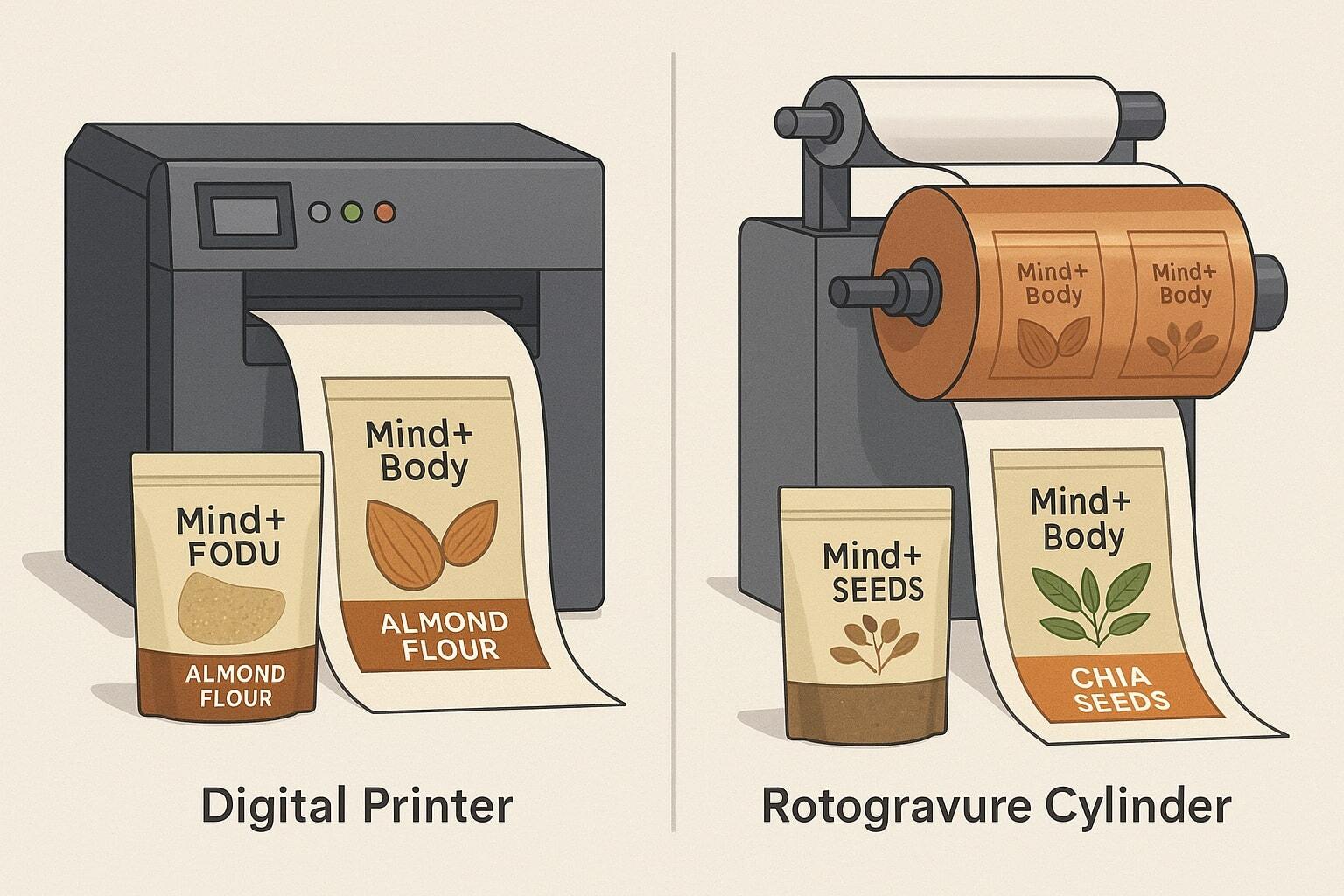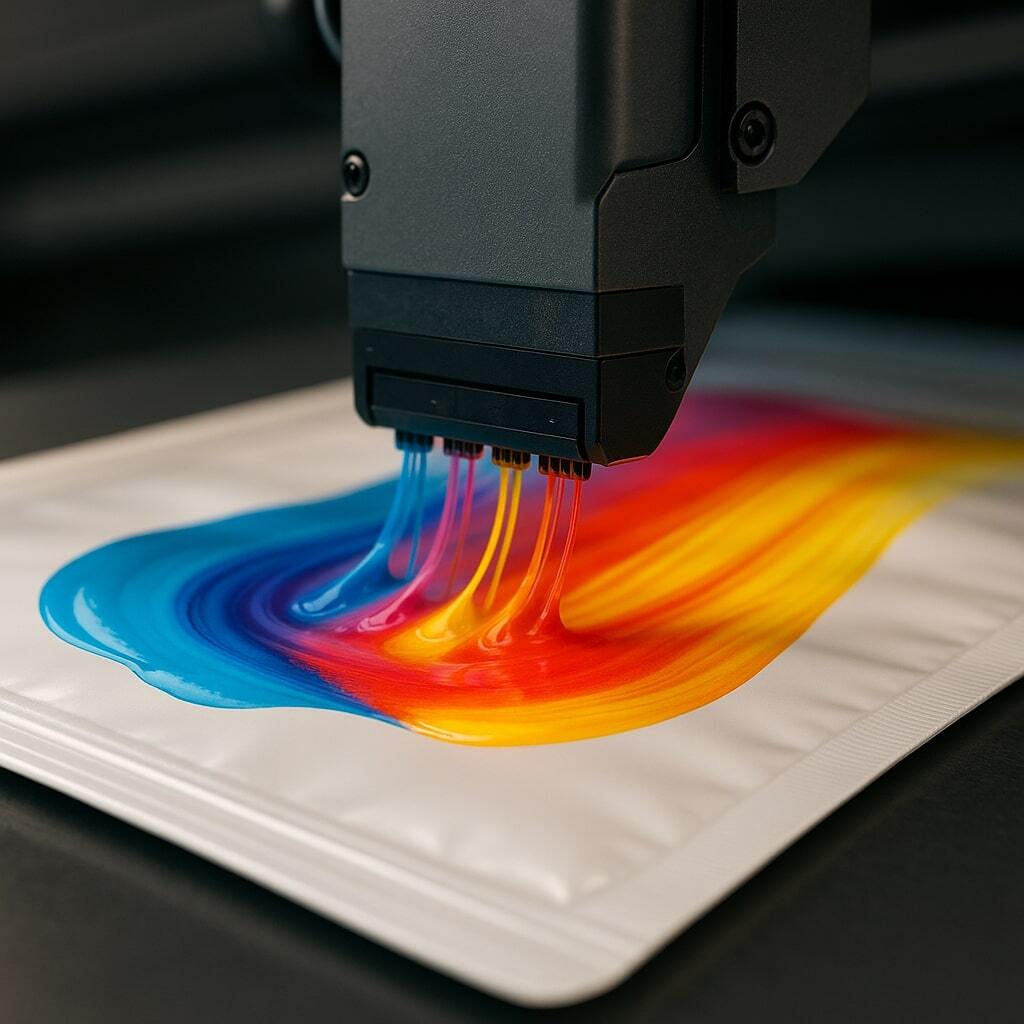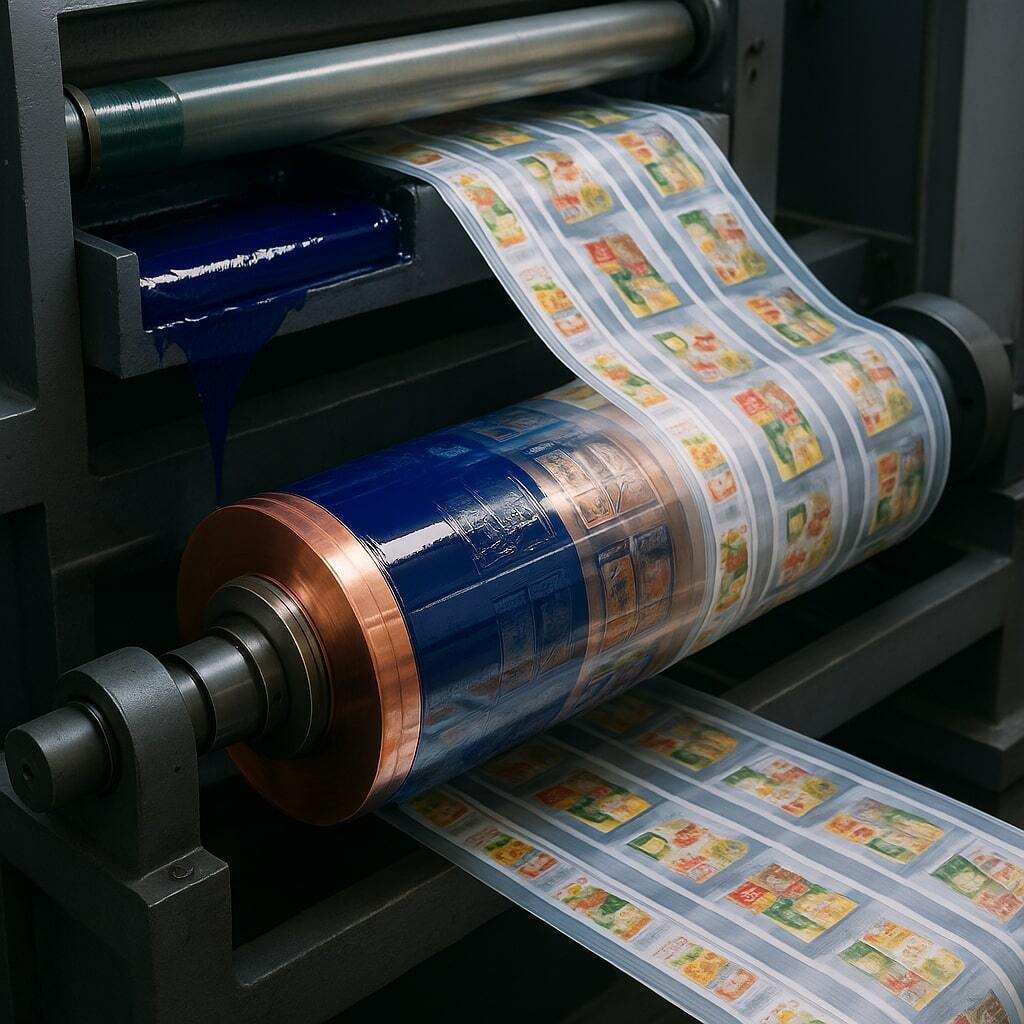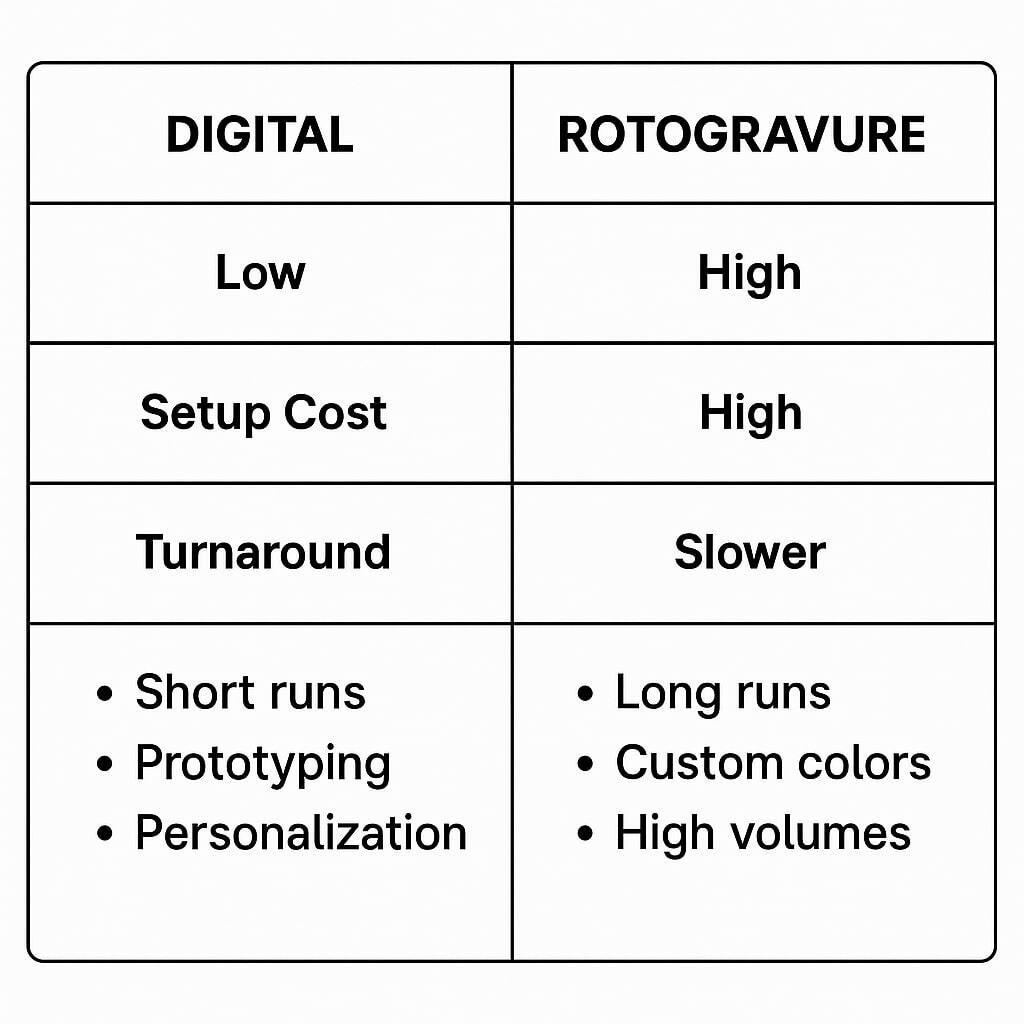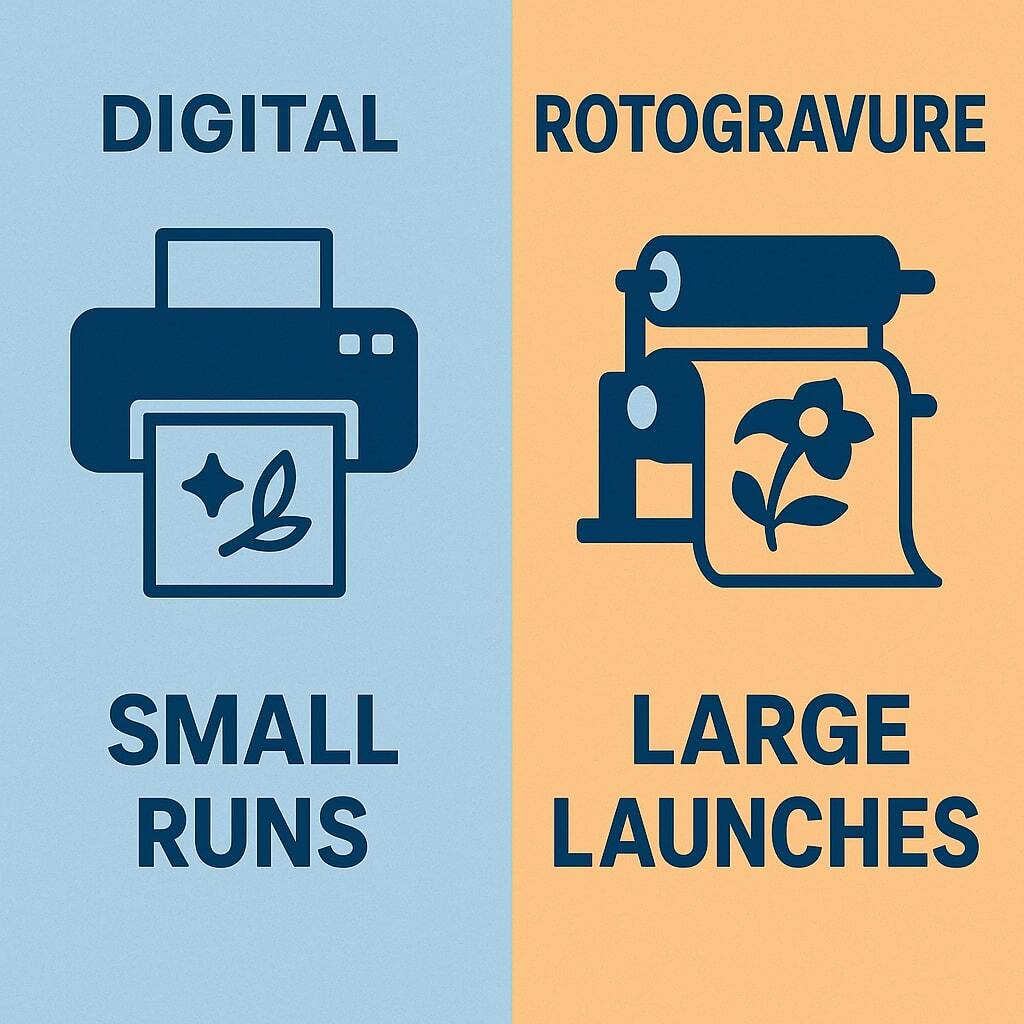What Is Digital Printing?
Digital printing applies your design directly onto the film—no plates required. It’s ideal for short runs, fast turnaround, and multiple SKUs.
Pros:
- No setup costs
- Fast revisions
- Photo-quality images
Cons:
- Higher unit cost at scale
- Color consistency varies run to run
